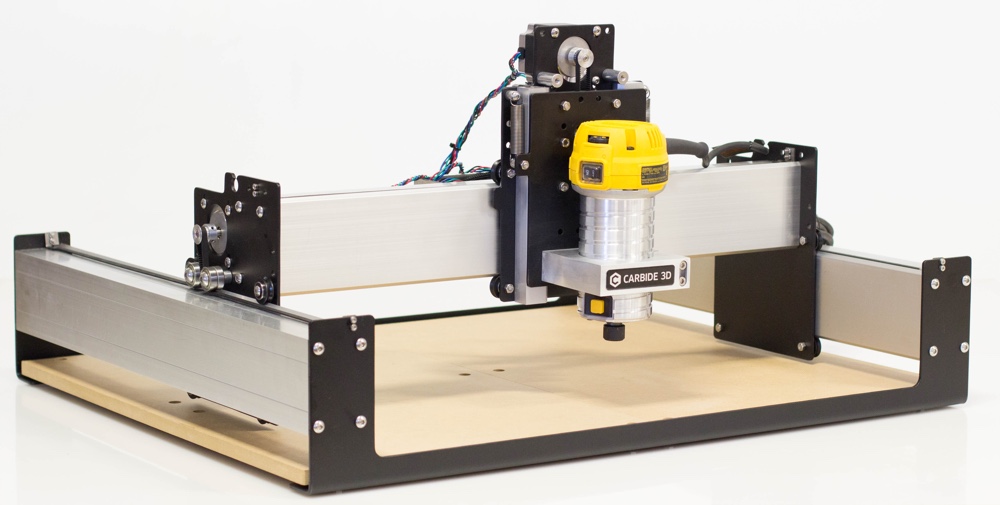What's going on
Last time all the talk was about making a big robust machine. Although that will happen, it's just a big risky to do straight away. Without a way of making little customisations to off the shelf components a machine is needed. There's no point spending lots of money building a big machine only to find ut the design wasn't quite right. So, I decided to by a Shapeoko 3 to get started. Not cheap, but pretty good value I think. It can be used to help make the big machine. More importantly it can be used to debug some of the software I'm writing to design stuff.
The purchased machine is actually a variant of the Shapeoko 3. Mechanically it is identical but the electronics are different. it runs a Stepoko control board which is just Sparkfun's take on GRBL compatible motion control. The board includes all the stepper drivers.
More small machines
Having a look at these machine made me would whether I could build a cheaper just as capable version. I definitely couldn't match it for elegance. It has the rails built into the extrusion which is very neat. It could also be problematic as if you damage a rail you have to replace the whole axis extrusion. The extrusions and thus rails are made from aluminium which isn't all that durable.
Replicating y-axis plates
The y-axis plate seems pretty important to the overall stiffness of the machine. The stiffness is created through the 90 degree bend in the sheet metal and the base plate that attaches to this. So, the ideas:
Using steel/aluminium angle
Buy a piece of steel/aluminium angle large enough all you have to do is drill some holes in the right place. Extra material can be taken away to allow material stock to be placed in the machine more easily. Sheet metal could be used and attach to a small piece of angled metal.
Composites
Carbon fibre makes a good stiff plate. It could be easy layed up inside a mould (such as a piece of aluminium angle) to create the shape. it could be used to make the entire base and y-axis plates as one. If this was made as a sandwich panel it would be very stiff and strong. The only problem is controlling the panel thickness accurately, but this should matter too much.
Replicating v rails
A crude but simple way of replicating a v rail is to attach a piece of steel/aluminium angle to a square or angle section as shown in the diagram below.

Placed in a simple jig to butt the edges square it could be tacked in place. It could be made from aluminium or steel. A rail made of steel/stainless steel would be an improvement over the Shapeoko aluminium rail. Problems that may arise include finding small enough angle and any warping from welding. This solution could then be fixed to the extrusion or used as the extrusion as seen below.


Each method has advantages and disadvantages. The attached method allows the rails to be a different material from the extrusion, say a steel rail fixed to an aluminium extrusion. it could also be replaced. Welding the rail directly to the extrusion saves material and connectors. It also provides a stiffer solution.
Replicating z-axis
